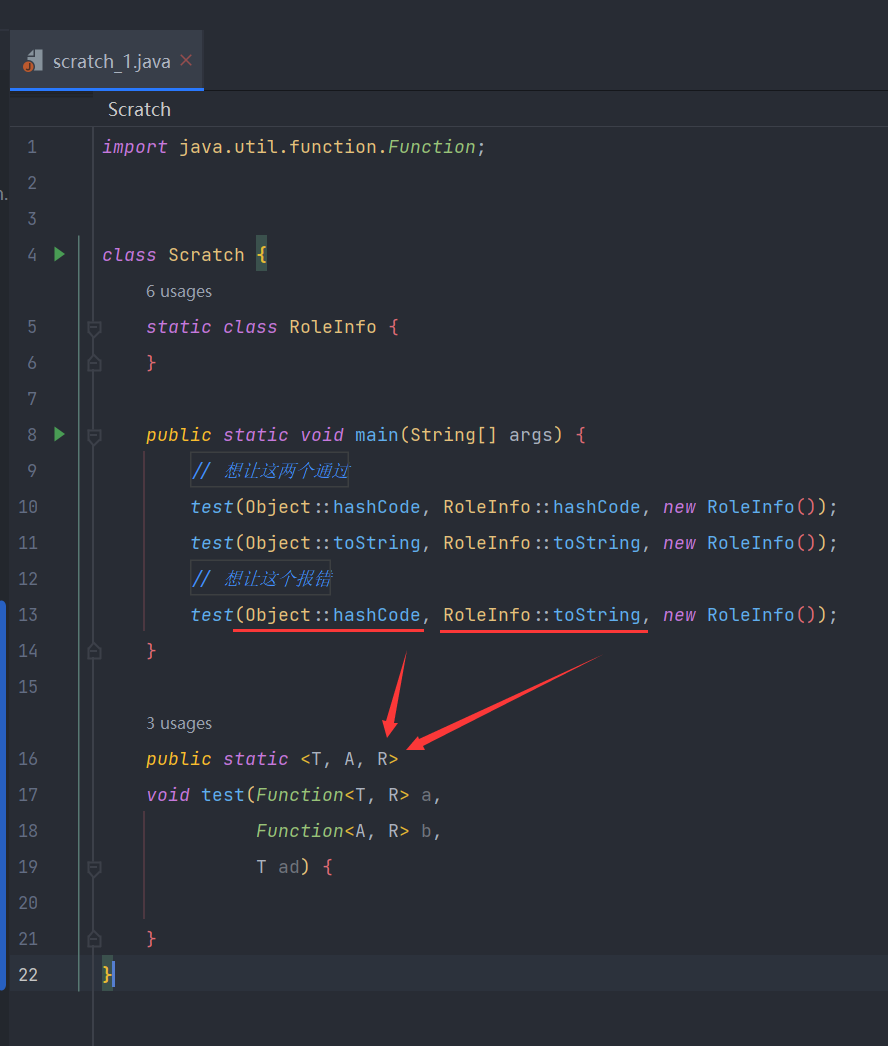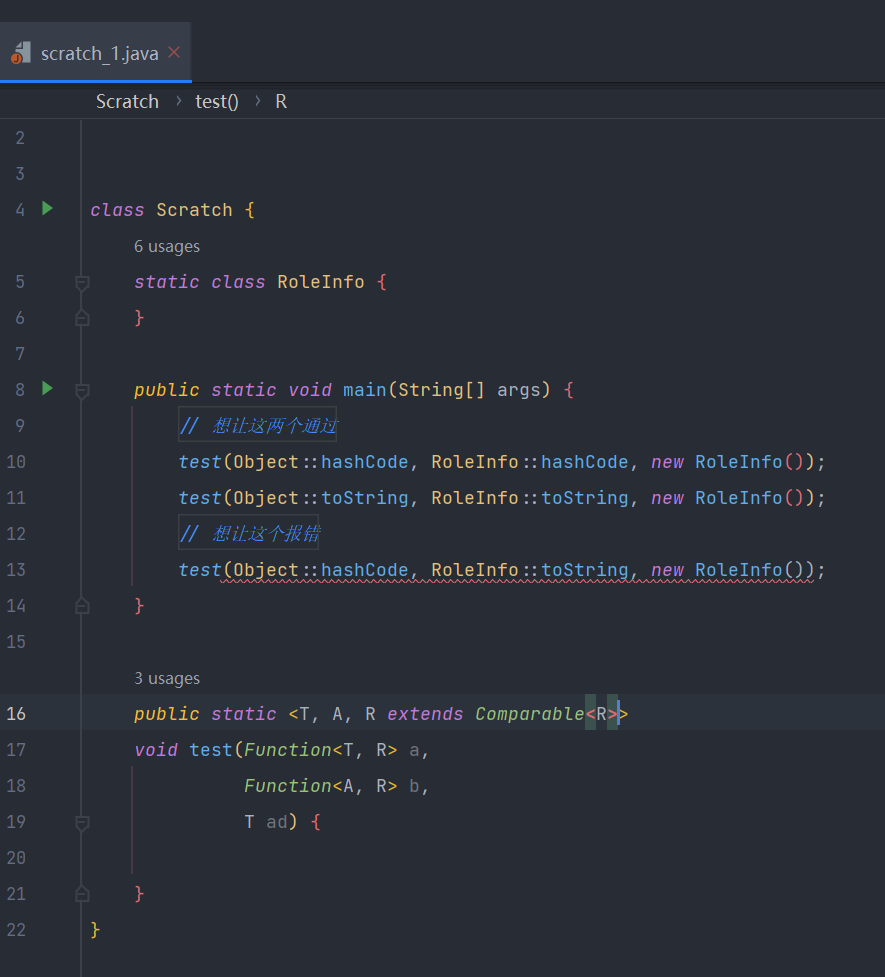双木非林,田下有心。——顾城
首先看这段代码:
1
2
3
4
5
6
7
8
9
10
11
12
13
14
15
16
17
18
19
20
21
22
| import java.util.function.Function;
class Scratch {
static class RoleInfo {
}
public static void main(String[] args) {
test(Object::hashCode, RoleInfo::hashCode, new RoleInfo());
test(Object::toString, RoleInfo::toString, new RoleInfo());
test(Object::hashCode, RoleInfo::toString, new RoleInfo());
}
public static <T, A, R>
void test(Function<T, R> a,
Function<A, R> b,
T ad) {
}
}
|
可以看到test方法的第0、1参数分别是Function<T, R>以及Function<A, R>
但这里却一致编译运行通过

最后使用了超类型限定解决了,我们可以看到Integer和String都实现了Comparable接口并限定了其类型:
String
1
| public final class String implements java.io.Serializable, Comparable<String>, CharSequence {}
|
Integer
1
| public final class Integer extends Number implements Comparable<Integer> {}
|
那么我们这里就可以利用这个特性:
1
2
3
4
5
6
7
8
9
10
11
12
13
14
15
16
17
18
19
20
21
22
| import java.util.function.Function;
class Scratch {
static class RoleInfo {
}
public static void main(String[] args) {
test(Object::hashCode, RoleInfo::hashCode, new RoleInfo());
test(Object::toString, RoleInfo::toString, new RoleInfo());
test(Object::hashCode, RoleInfo::toString, new RoleInfo());
}
public static <T, A, R extends Comparable<R>>
void test(Function<T, R> a,
Function<A, R> b,
T ad) {
}
}
|
达成效果:




